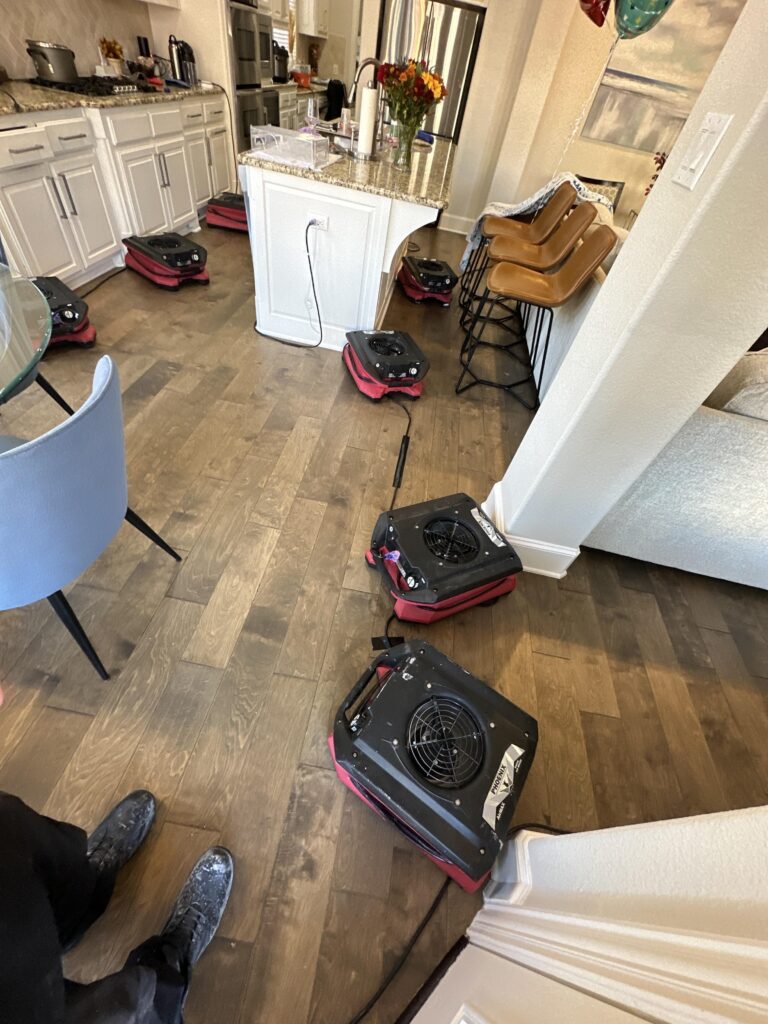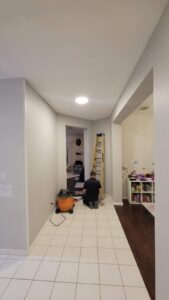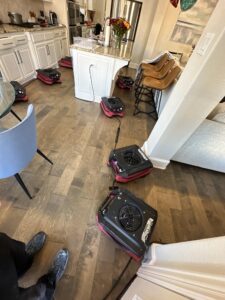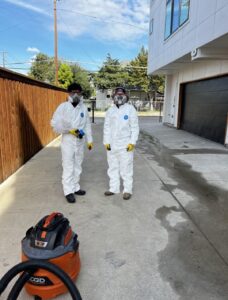At Water Rehab & Restoration, we’ve seen it all when it comes to water damage. While burst pipes and heavy storms often steal the spotlight, there are plenty of less obvious culprits quietly causing chaos behind the scenes. One of the most underestimated threats? High humidity. Yep, moisture in the air can be just as destructive as a soaked carpet or a flooded basement.
If you’ve ever walked into a room and thought, “Wow, it feels damp in here,” that sensation could be a red flag. In this article, we’re diving into how high humidity and other sneaky causes can lead to serious water damage, mold growth, and costly repairs if left unchecked. Our goal is to keep your home or business dry, safe, and structurally sound.
Key Takeaways
- High humidity (above 60%) can cause hidden water damage inside your home.
- Common signs of hidden water damage include musty odors, warped floors, and mold growth.
- HVAC malfunctions, appliance leaks, and poorly sealed windows are often overlooked sources of water damage.
- Preventative steps like using dehumidifiers, improving ventilation, and inspecting appliances can reduce your risk.
- If you suspect water damage, call professionals like Water Rehab & Restoration to inspect and mitigate the issue before it worsens.
The Hidden Dangers of High Humidity
Let’s start with the big one: humidity. While a little moisture in the air is normal, consistently high humidity (typically anything above 60%) can slowly wreak havoc indoors. Here’s how:
1. Moisture Buildup in Walls and Ceilings
When the air is full of moisture, that humidity eventually settles somewhere, and oftentimes, it seeps into porous materials like drywall, insulation, and ceiling tiles. Over time, these materials become damp, soft, and structurally unsound.
2. Mold and Mildew Growth
Mold loves warm, moist environments, so it’s no surprise that high humidity creates the perfect breeding ground for this unwelcome guest. Once mold takes hold, it spreads quickly, can damage your property, and even affect your health.
3. Condensation Damage
Think about a cold glass of water on a hot day and how it collects water droplets on the outside. Now imagine that same effect happening on your windows, pipes, or walls every single day due to high humidity. That moisture may seem harmless at first, but over time, it leads to rot, rust, and decay.
4. Damage to Wood and Flooring
Wood absorbs moisture from the air, and when humidity levels stay high, floors can warp, furniture can crack, and wooden structures can swell or even split.
Other Unexpected Causes of Water Damage
While humidity is one of the sneakier sources of damage, it’s not alone. Here are some other lesser-known threats we often see during our water restoration work.
1. HVAC Issues
Heating and cooling systems are designed to regulate temperature, but if something’s off (like a clogged drain line or leaking unit, for example) it can release excess moisture into your home. If your HVAC system isn’t properly maintained, it could be dripping water in your attic, crawl space, or behind walls without you ever noticing.
2. Appliance Malfunctions
We trust our dishwashers, washing machines, and water heaters to do their jobs, but seals, hoses, and valves wear out over time. A slow drip behind a washing machine might not seem like a big deal until it turns into a soaked subfloor or moldy drywall.
3. Leaky Windows and Doors
Not all water damage is the result of a dramatic flood. Sometimes, it’s the steady trickle of rainwater sneaking in around poorly sealed windows or under old door frames. Over time, that small leak adds up to major damage.
4. Roof Vent and Skylight Leaks
Roofs aren’t just at risk during big storms. Improper flashing around vents, chimneys, or skylights can let moisture even with mild precipitation. Because these areas are out of sight, leaks can go unnoticed until stains appear on the ceiling or insulation is already soaked.
5. Plumbing Pipe Pinholes
Not all pipe leaks gush water. In fact, one of the more risky kinds of leaks is a pinhole leak—a tiny opening in a pipe that slowly releases water over weeks or even months. These are often hidden behind walls or under flooring, making them hard to detect until the damage is pretty extensive.
6. Basement Humidity and Hydrostatic Pressure
Your basement is the lowest point of your home, making it extra vulnerable to moisture and water damage. Groundwater can push through cracks in the foundation or seep through walls due to hydrostatic pressure (the pressure created by standing or stagnant water),especially during rainy seasons. Combine that with high basement humidity, and you’ve got a recipe for mold, mildew, and structural damage.
How to Spot the Early Signs of Hidden Water Damage
Catching subtle water damage early can save you a ton of stress and money. Here are a few red flags to watch out for:
- Musty odors that don’t go away
- Peeling paint or wallpaper
- Discoloration on walls or ceilings
- Warped floors or baseboards
- Visible mold in corners, closets, or behind furniture
- Sudden spikes in your water bill
- Excess condensation on windows and walls
If you notice any of these signs, it’s time to investigate further and possibly call in a professional.
What You Can Do to Prevent Humidity-Related Damage
While you can’t control the weather, there are several smart ways to control humidity and protect your property from water damage.
1. Use a Dehumidifier
In especially damp areas like basements or bathrooms, a dehumidifier can make a huge difference. It pulls moisture out of the air, reducing the risk of condensation and mold growth.
2. Keep Air Flowing
Good ventilation helps regulate humidity. Use exhaust fans in bathrooms and kitchens, and consider adding vents to areas that tend to trap moisture.
3. Maintain Your HVAC System
Schedule regular inspections and cleanings. Make sure condensate lines are clear and there’s no excess moisture or leaks around the unit.
4. Monitor Indoor Humidity Levels
Use a hygrometer (a humidity gauge) to keep an eye on your home’s moisture levels. Ideally, keep it between 30% and 50%.
5. Inspect Pipes and Appliances Regularly
Check under sinks, behind appliances, and around toilets for signs of moisture or corrosion. Replace worn hoses and parts before they fail.
6. Seal Up Leaks
Make sure windows and doors are properly sealed. If you see any water coming through when its raining, don’t ignore it—patch it up before it gets worse.
7. Waterproof Your Basement
Consider installing a sump pump, sealing foundation cracks, or applying a waterproof coating to basement walls. These upgrades can go a long way in keeping your lowest level dry.
When to Call the Professionals
Some water issues are small enough to handle with a towel and a fan—but others require professional help. If you suspect hidden water damage, notice mold, or are dealing with a recurring problem, don’t wait.
At Water Rehab & Restoration, we specialize in identifying the source of the problem, stopping it in its tracks, and restoring your home or business to a safe, clean condition. We use advanced moisture detection tools, thermal imaging, and proven drying techniques to catch and fix damage before it spreads.
Whether it’s a high humidity issue, a hidden leak, or unexpected appliance failure, we’re here to help you get back to normal as quickly as possible.
Need help identifying or fixing water damage in your home or business? Water Rehab & Restoration has the tools, experience, and dedication to restore your space and your peace of mind. Reach out today and let us help you get ahead of the problem before it progresses.





